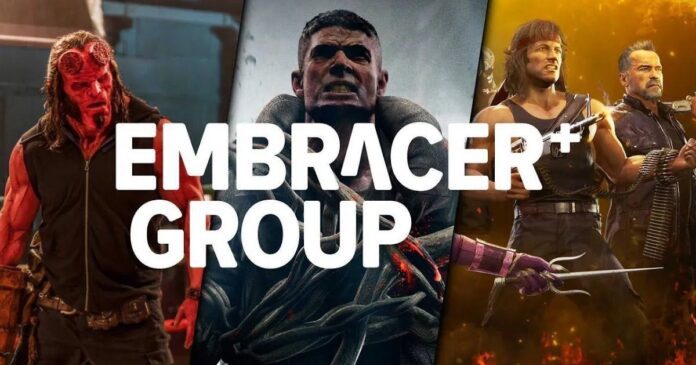Introduction
The once-promising gaming empire, Embracer , led by CEO Lars Wingefors, finds itself in tumultuous waters as it grapples with a series of setbacks, including layoffs, project cancellations, and the closure of several game development studios. This article delves into the intricacies of Embracer’s recent challenges, examining the factors that led to the company’s predicament and the repercussions reverberating through the gaming industry.
I. The Rise and Fall of Embracer’s Ambitious Expansion
I.1 CEO Lars Wingefors’ Vision
Lars Wingefors, the ambitious CEO of Embracer, envisioned a gaming conglomerate that would reign supreme, encompassing multiple video game publishers and studios. The company, at its zenith, employed over 16,500 people and held an extensive portfolio of gaming assets.
I.2 The Unprecedented Acquisition Spree
Embracer’s expansion strategy was marked by an unparalleled acquisition spree, acquiring everything from established studios like Deus Ex’s creator to acquiring the license for The Lord of the Rings. The approach seemed to be an audacious attempt to create a singular gaming entity, one that would dominate the industry.
II. The Unraveling: Layoffs, Project Cancellations, and Studio Closures
II.1 Checkmate: The Fallout Begins
As Embracer reckons with the aftermath of ambitious deals and the fallout from an unprecedented acquisition spree, the company faces a harsh reality. The latest earnings report reveals the laying off of 900 employees, amounting to approximately five percent of its workforce, since the beginning of the year. Moreover, 15 projects, most of them undisclosed, faced cancellations.
II.2 Striking a Balance: CEO’s Dilemma
CEO Lars Wingefors finds himself in a delicate balancing act, acknowledging the need for a restructuring program while emphasizing compassion, respect, and integrity. The challenge is exacerbated by the concurrent focus on “maximizing shareholder value,” underscoring the tension between financial imperatives and employee welfare.
III. Gaming Industry Carnage: Fallout Across Embracer’s Portfolio
III.1 A Year of Setbacks for the Gaming Industry
The broader gaming industry has experienced a challenging year, marked by publishers and studios cutting staff and budgets amid rising interest rates and missed forecasts. However, Embracer’s portfolio, a seemingly random assortment of gaming entities, has borne the brunt of this upheaval.
III.2 Studio Closures and Layoffs: A Glimpse into the Fallout
Layoffs at Crystal Dynamics, Beamdog, Zen Studios, and the complete shuttering of Volition, the studio behind the Saints Row reboot, illustrate the extent of the fallout. Cryptic Studios, maker of the Neverwinter MMO, also resorted to staff cuts, and reports suggest that Free Radical Design, the rebooted TimeSplitters studio, is at risk of closing once again.
III.3 Financial Complexities: Debt and Profits
The financial landscape of Embracer paints a complex picture, characterized by a juxtaposition of debt and reported profits. Understanding these financial intricacies is crucial in comprehending the challenges the company faces and the potential implications for its future.
1. Debt Burden: $1.5 Billion in the Red
- Despite an increase in net sales by $36 million, Embracer finds itself burdened by a substantial debt of $1.5 billion. The origins and implications of this debt raise questions about the financial decisions made by the company, especially in the context of its recent ambitious acquisitions and expansion strategy.
2. Lord of the Rings-themed Magic: The Gathering Cards: A Profit Driver?
- The reported source of recent profits, Lord of the Rings-themed Magic: The Gathering cards, adds a layer of complexity to Embracer’s financial narrative. The reliance on such niche revenue streams prompts scrutiny into the sustainability of the company’s profit sources and the effectiveness of diversification in mitigating financial risks.
3. Profitability Amid Layoffs and Closures
- Embracer’s profitability is further juxtaposed against the backdrop of widespread layoffs, studio closures, and canceled projects. The incongruity between reported profits and the significant restructuring within the company raises questions about the strategies employed to ensure financial stability and whether these strategies align with long-term industry trends.
4. Role of External Funding: The $2 Billion Loan That Fell Through
- The revelation of a $2 billion loan that fell through, reportedly with the gaming wing of Saudi Arabia’s public investment fund, underscores the precarious nature of Embracer’s financial health. The reliance on external funding and the subsequent failure of such a substantial loan raise concerns about the company’s financial foresight and its ability to sustain operations without external support.
5. Strategic Reorientation: Leaner, Stronger, and Cash Self-sufficient?
- CEO Lars Wingefors emphasizes a strategic reorientation through a restructuring program aimed at improving efficiency and cash generation. The goal is to transform Embracer into a “leaner, stronger, more focused, and cash self-sufficient company.” The effectiveness of this strategy in navigating financial complexities and steering the company toward a more sustainable future remains a critical aspect of Embracer’s ongoing narrative.
IV. Accountability and Reflection: Unraveling Embracer’s Strategy
IV.1 A Major Miscalculation: The $2 Billion Loan
In retrospect, Embracer’s short-term sustainability seemed to hinge on a $2 billion loan that fell through at the last moment. The deal, reportedly with the gaming wing of Saudi Arabia’s public investment fund, raises questions about the company’s financial strategy and its reliance on external support.
IV.2 Lack of Accountability: The Strategy of Throwing Everything at the Wall
The unraveling of Embracer prompts questions about accountability. The company’s strategy of acquiring numerous teams, talent, and franchises to discern which ones generate profits, appears to have backfired. The absence of acknowledgment of major miscalculations adds to the uncertainty surrounding Embracer’s future.
V. Leadership Changes: A Shifting Landscape
V.1 Departure of COO Egil Strunke
While the CEO, Lars Wingefors, remains at the helm, the departure of former Chief Operating Officer Egil Strunke signals a significant change in the company’s executive leadership. Strunke’s departure, coupled with his positive outlook, raises questions about internal dynamics and the company’s ability to weather the storm.
Conclusion: Navigating Uncertain Waters
As Embracer grapples with layoffs, studio closures, and financial complexities, the gaming industry witnesses a powerhouse in distress. The company’s future remains uncertain, with the effectiveness of its restructuring program and the ability to navigate challenges determining whether Embracer can emerge stronger or succumb to the pressures of its own expansion ambitions. The story of Embracer serves as a cautionary tale in an industry where success demands a delicate balance between ambition and strategic acumen.










